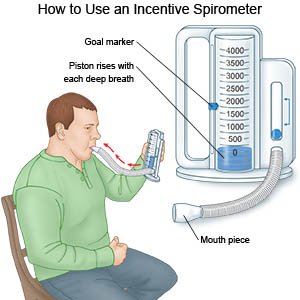Urinary Bladder Suspension
Medically reviewed by Drugs.com. Last updated on Apr 6, 2025.
Urinary bladder suspension is also know as a laparoscopic Burch procedure. This procedure is done to treat stress urinary incontinence and bladder prolapse.
WHILE YOU ARE HERE:
Before your procedure:
- Informed consent is a legal document that explains the tests, treatments, or procedures that you may need. Informed consent means you understand what will be done and can make decisions about what you want. You give your permission when you sign the consent form. You can have someone sign this form for you if you are not able to sign it. You have the right to understand your medical care in words you know. Before you sign the consent form, understand the risks and benefits of what will be done. Make sure all your questions are answered.
- An IV is a small tube placed in your vein that is used to give you medicine or liquids.
- General anesthesia will keep you asleep and free from pain during your procedure. Anesthesia may be given through your IV. You may instead breathe it in through a mask or a tube placed down your throat. The tube may cause you to have a sore throat when you wake up.
During your procedure:
- General anesthesia will keep you asleep and free from pain during surgery. Your surgeon will make several small incisions on your abdomen. A scope and other tools will be inserted below your belly button. Your surgeon will inflate your abdomen with carbon dioxide gas. The gas will help your healthcare provider see your organs.
- Your surgeon will place stitches to suspend and hold the bladder in place. Stitches will also help support your pelvic ligaments. Pelvic ligaments are strong muscle-like tissues that support the organs in the abdomen, such as the uterus and bladder. The incisions are then closed with stitches or surgical tape and covered with bandages.
After your procedure:
You will be taken to a room to rest until you are fully awake. You will be monitored closely for any problems. Do not get out of bed until your healthcare provider says it is okay. You will then be able to go home.
- You will be able to eat and drink gradually after surgery. You will begin with ice chips or clear liquids such as water, broth, juice, and clear soft drinks. If your stomach does not become upset, you may then eat soft foods, such as ice cream and applesauce. Once you can eat soft foods easily, you may slowly begin to eat solid foods.
- A Foley catheter is a tube put into your bladder to drain urine into a bag. Keep the bag below your waist. This will prevent urine from flowing back into your bladder and causing an infection or other problems. Also, keep the tube free of kinks so the urine will drain properly. Do not pull on the catheter. This can cause pain and bleeding, and may cause the catheter to come out.
- Take deep breaths and cough 10 times each hour. This will decrease your risk for a lung infection. Take a deep breath and hold it for as long as you can. Let the air out and then cough strongly. Deep breaths help open your airway. You may be given an incentive spirometer to help you take deep breaths. Put the plastic piece in your mouth and take a slow, deep breath. Then let the air out and cough. Repeat these steps 10 times every hour.

- Medicines may be given to decrease pain, prevent nausea, or prevent a bacterial infection.
RISKS:
You may bleed more than expected or get an infection. You may need to have one large incision instead of several small incisions. Your bladder or intestines may be injured during the procedure. You may get a blood clot in your leg or arm. This may become life-threatening. Your symptoms may only go away for a short time, or not at all.
CARE AGREEMENT:
You have the right to help plan your care. Learn about your health condition and how it may be treated. Discuss treatment options with your healthcare providers to decide what care you want to receive. You always have the right to refuse treatment.© Copyright Merative 2025 Information is for End User's use only and may not be sold, redistributed or otherwise used for commercial purposes.
The above information is an educational aid only. It is not intended as medical advice for individual conditions or treatments. Talk to your doctor, nurse or pharmacist before following any medical regimen to see if it is safe and effective for you.
Further information
Always consult your healthcare provider to ensure the information displayed on this page applies to your personal circumstances.
